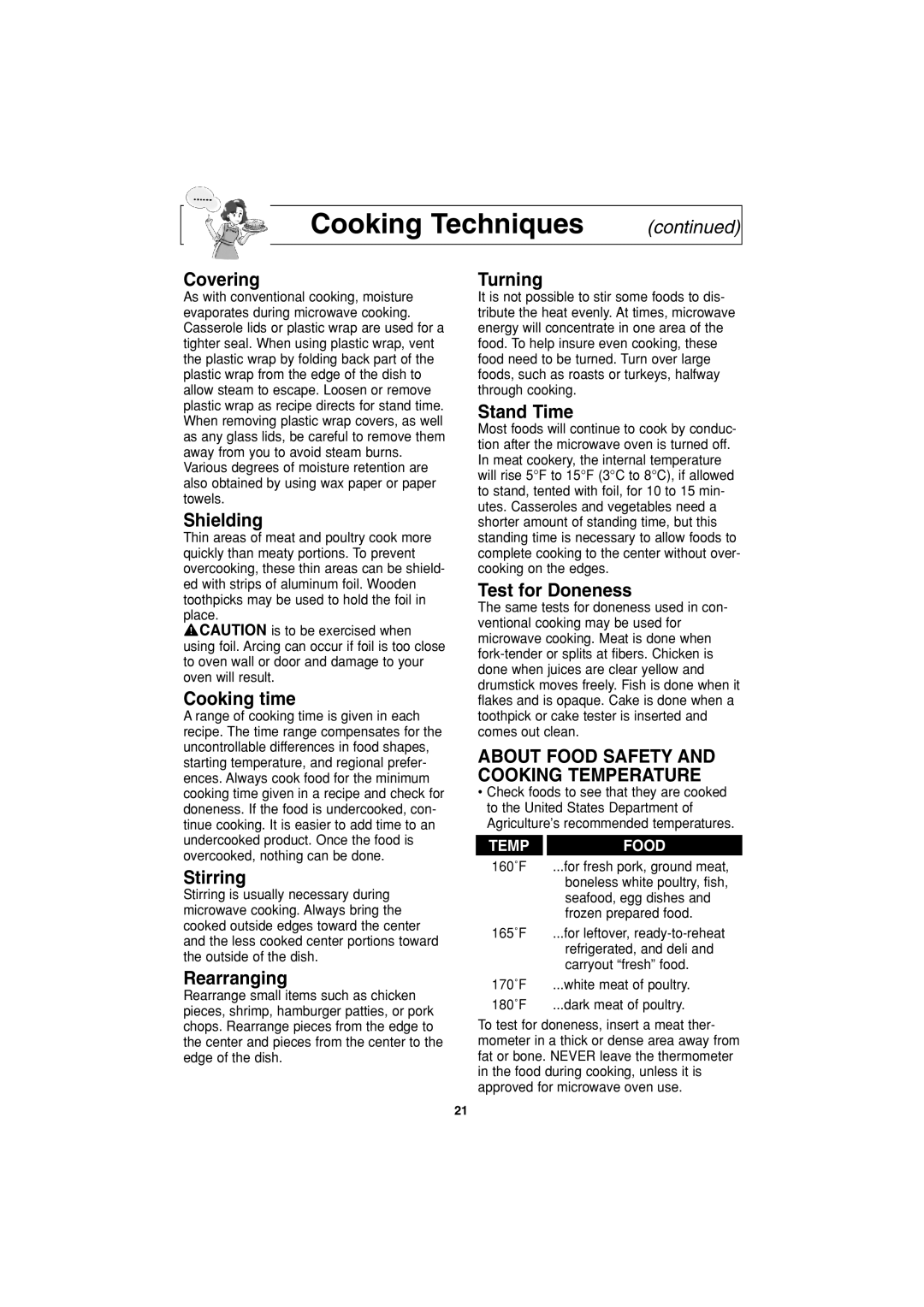NN-S503, NN-S553 specifications
The Panasonic NN-S503 and NN-S553 are cutting-edge microwave ovens designed to enhance cooking efficiency and convenience in modern kitchens. Both models embody Panasonic's commitment to quality and innovation, featuring advanced technologies and user-friendly designs that cater to the diverse needs of today’s consumers.One of the standout features of these microwave ovens is the Inverter Technology. Unlike traditional microwaves that use a pulsing system to regulate power, inverter technology delivers a steady stream of cooking power. This ensures that food is cooked evenly and thoroughly without hot spots or overcooking. The precise temperature control allows users to enjoy perfectly heated meals, making it ideal for delicate dishes like melting chocolate or defrosting meats.
In terms of capacity, the NN-S503 boasts a 1.2 cubic foot interior, while the NN-S553 takes it a step further with a slightly larger capacity, making them suitable for various cooking needs. These models also offer a range of wattage options, with the NN-S503 providing 1000 watts and the NN-S553 offering even more power for faster cooking. This efficiency saves time, allowing busy individuals and families to prepare meals more quickly without sacrificing quality.
Both models feature a sleek, modern design that fits seamlessly into any kitchen décor. The touch control panel is intuitive and easy to use, enabling users to quickly select cooking functions and settings. Additionally, the bright LED display provides clear visibility, making it easy to monitor cooking progress.
Another significant advantage of the NN-S503 and NN-S553 is the inclusion of pre-programmed cooking settings. These presets simplify meal preparation by automatically adjusting cooking time and power levels for a variety of foods, including popcorn, pizza, and vegetables. This feature caters to novice cooks, ensuring consistent results every time.
Speaking of convenience, both models come equipped with a keep-warm feature that maintains food temperature until it is ready to be served. This is particularly useful for busy households where meal times may vary.
Finally, the easy-to-clean interior ensures maintenance is hassle-free, allowing users to spend more time enjoying their meals and less time on cleanup. In summary, the Panasonic NN-S503 and NN-S553 microwave ovens are innovative, feature-rich appliances that enhance cooking experiences, making them worthy additions to any kitchen.

